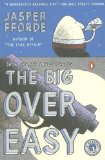I first read Diana Gabaldon’s novel Outlander in about 1998 or 1999. I remember loving it. In fact, I liked it so much that my first early forays into creating websites were focused on a Diana Gabaldon fan site. For the uninitiated, the Outlander series is the story of Claire, who takes an early morning walk to the standing stones at Craigh na Dun near Inverness while on her second honeymoon with her husband Frank Randall and finds herself nearly 200 years in the past. She is captured by members of the MacKenzie clan and falls in love with and marries Jamie Fraser, but she knows the second Jacobite rising is coming, and she fears for his future.
On a re-read, Outlander definitely holds up. Diana Gabaldon describes her method of writing as creating scenes and then putting them together like a puzzle. I am not sure I knew that last time I read, but knowing as I read this time, I could see it in action. None of the scenes appears to stop the plot; instead, they serve to add realism and round out the characters. I remarked to my sister that the book is a little more “rapey” than I remembered, and we laughed. What I mean by that is I had forgotten that Claire was so often in imminent danger of being raped. Once again, a horrific scene of torture near the end of the novel struck me as gratuitous and over-the-top, just as it did on my first read. Gabaldon has created a gift of a character in Jamie Fraser. He pops off the page, larger than life.
Gabaldon has a gift for storytelling. I know I certainly keep turning the pages. She also has a gift for humor, and if she doesn’t flinch from describing scenes of violence, she leavens it with one of the best love stories I’ve read. I have not read a time-travel romance yet that tops Jamie and Claire’s, and I’ve read a few. 😳 What? It’s a guilty pleasure. One of the things I like best about her books is that I do learn things. I find the herbalism and history particularly interesting. The herbalism and setting of Gabaldon’s books strongly influenced my own book, A Question of Honor.
I have not read the last three books in Gabaldon’s series, and given the amount of time that has passed since I last read the first four, I thought perhaps a re-read was in order before attempting the last two. I am a little nervous about the time commitment. I have a friend who has read The Fiery Cross (I never finished it) and parts of An Echo in the Bone, and she said they were somewhat boring. I can’t recall if we talked about A Breath of Snow and Ashes. Anyone read them and can verify? I’ll probably try to read them, but I admit to being wary. I felt the early books in the series, even among the first four, were the best.













